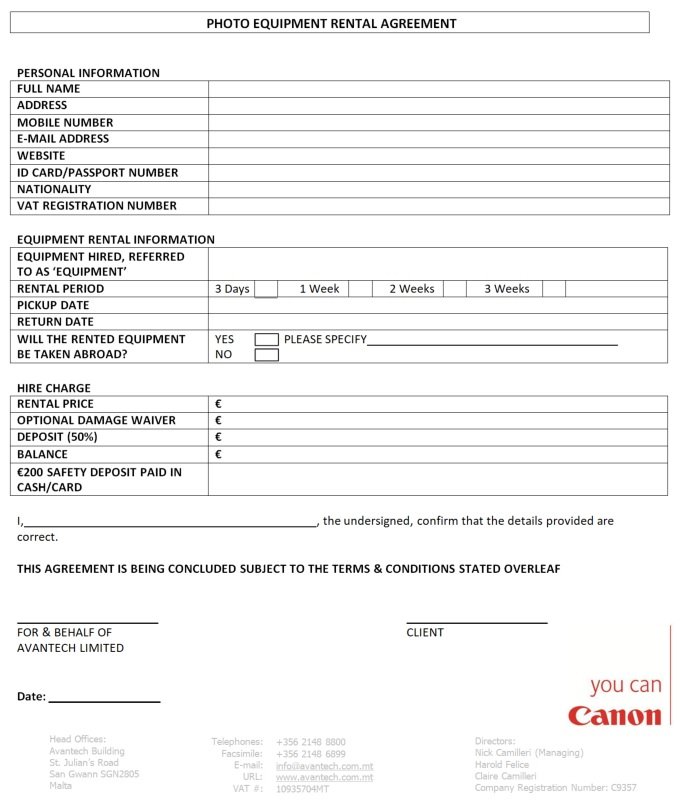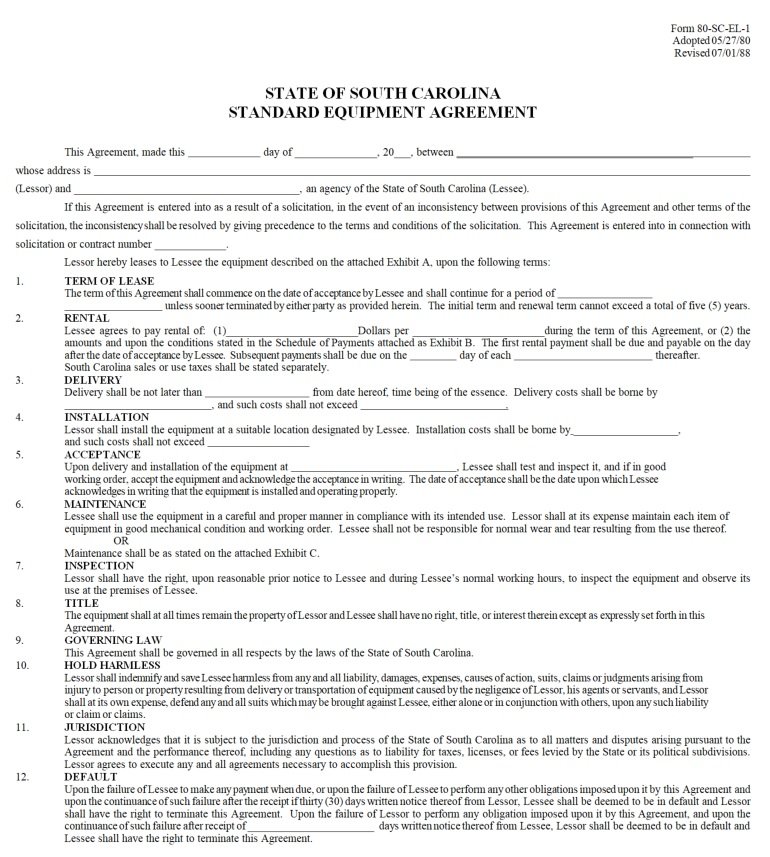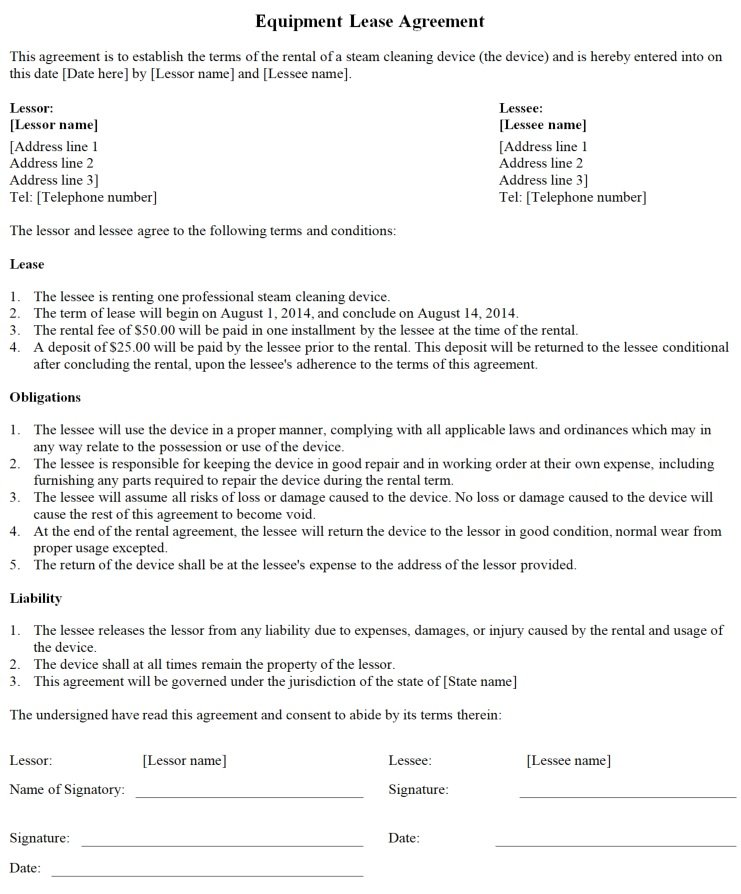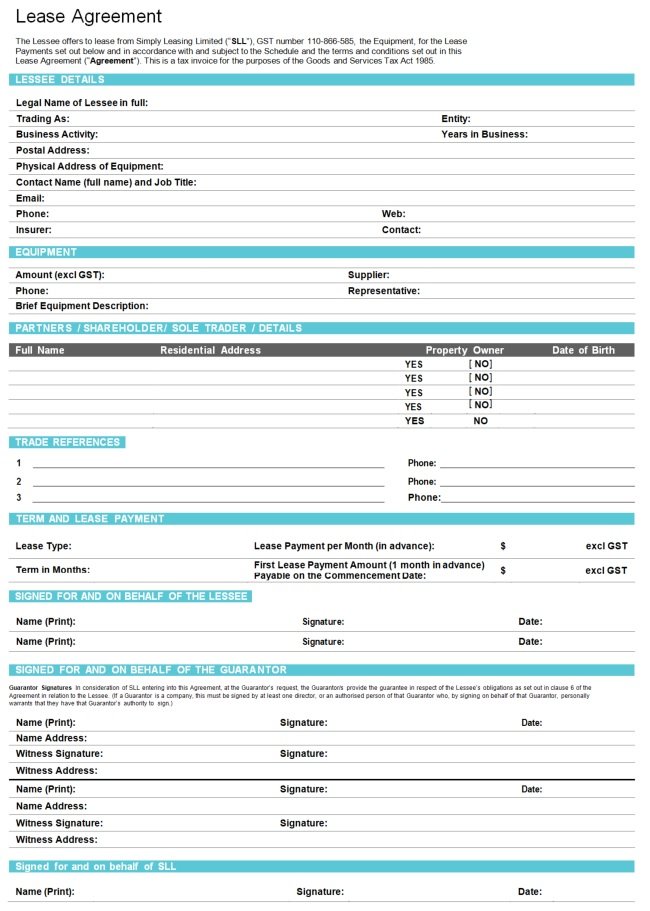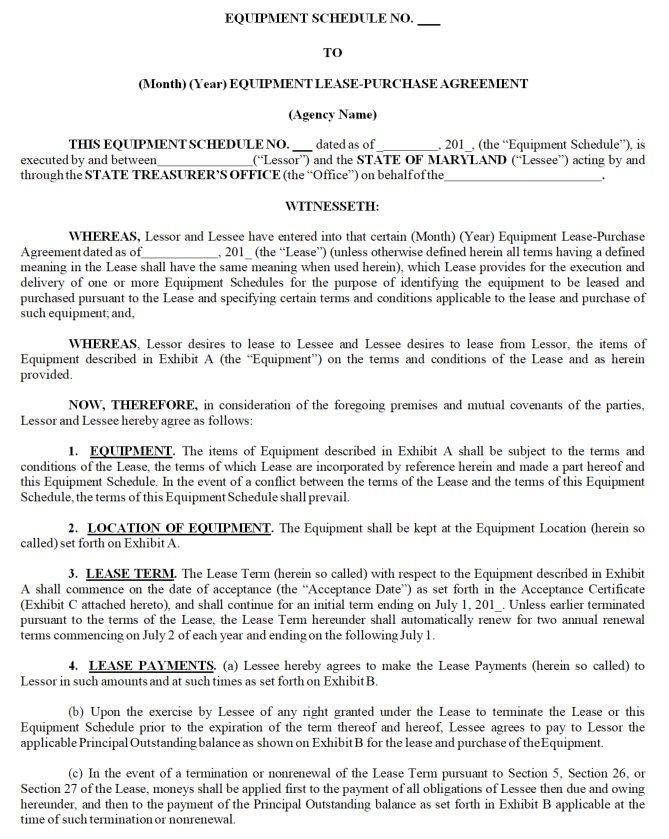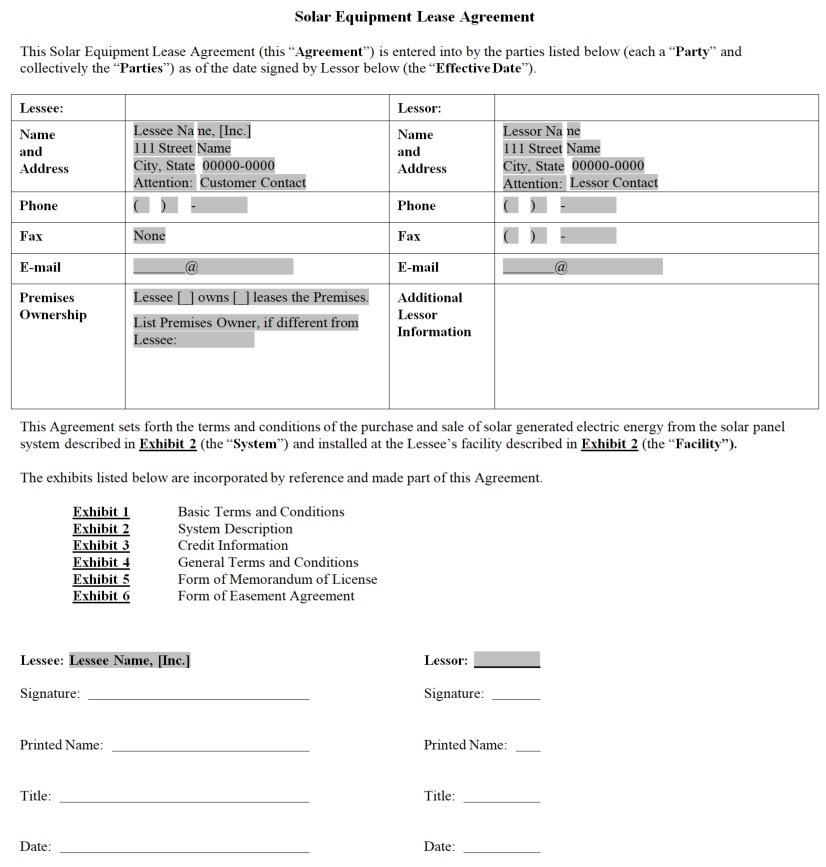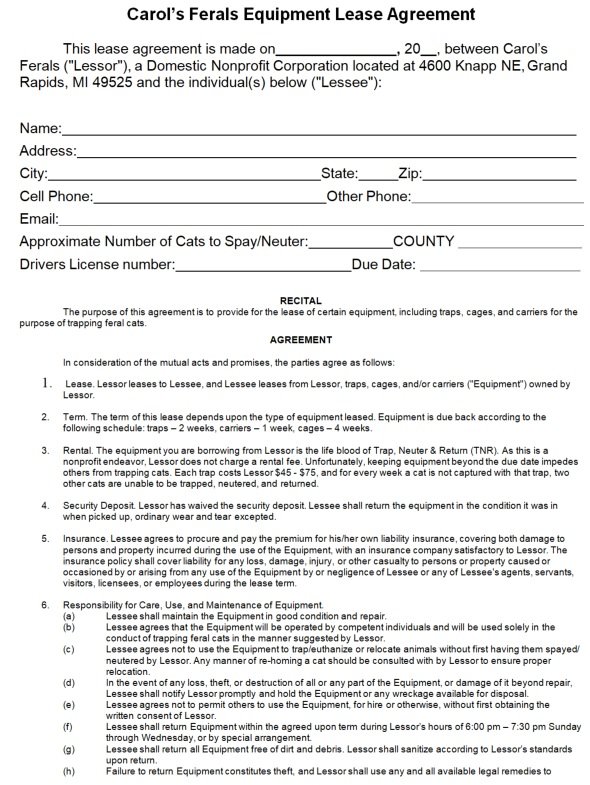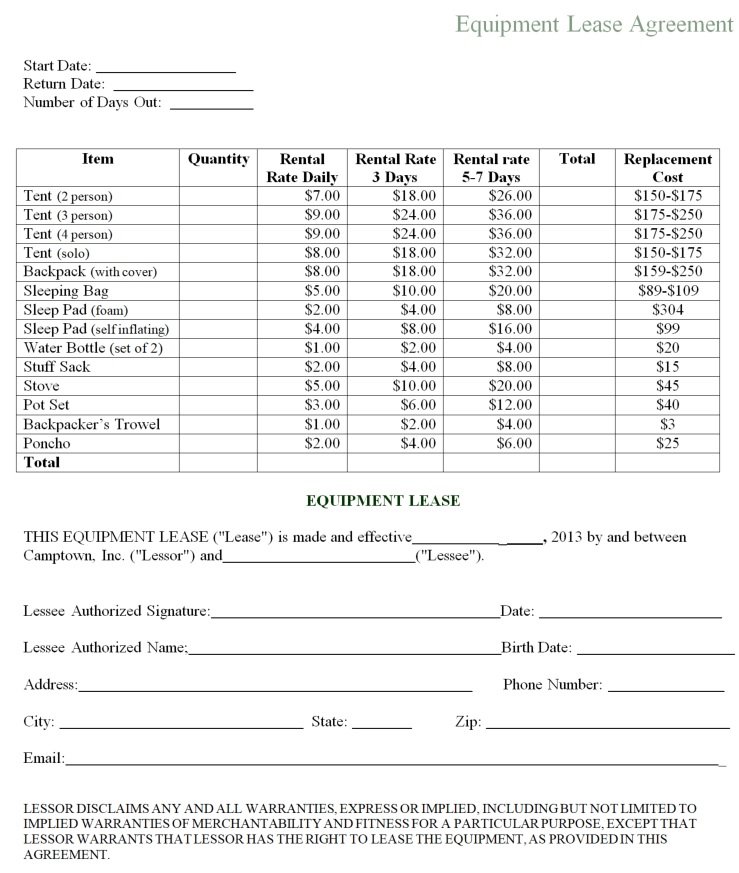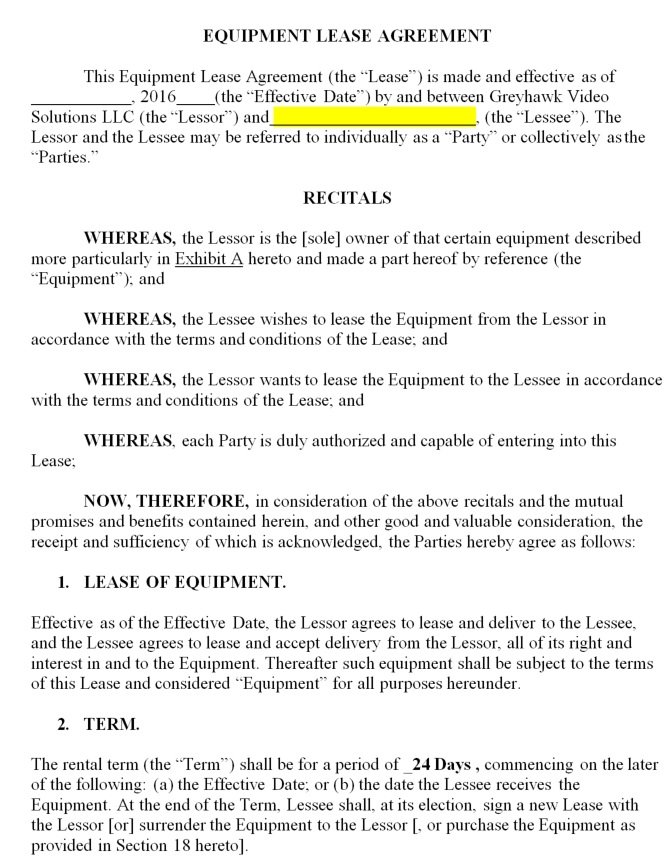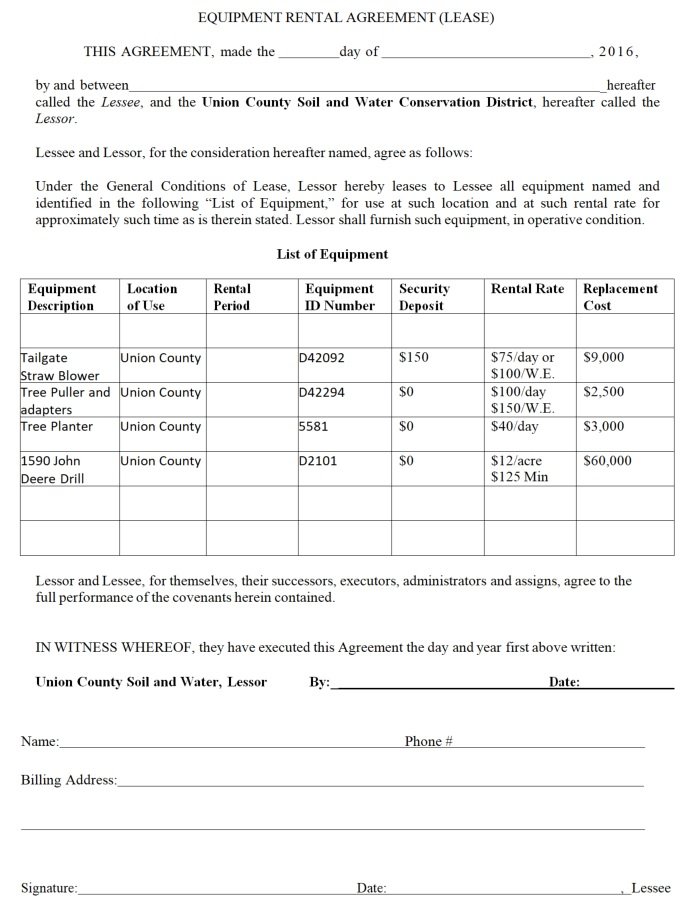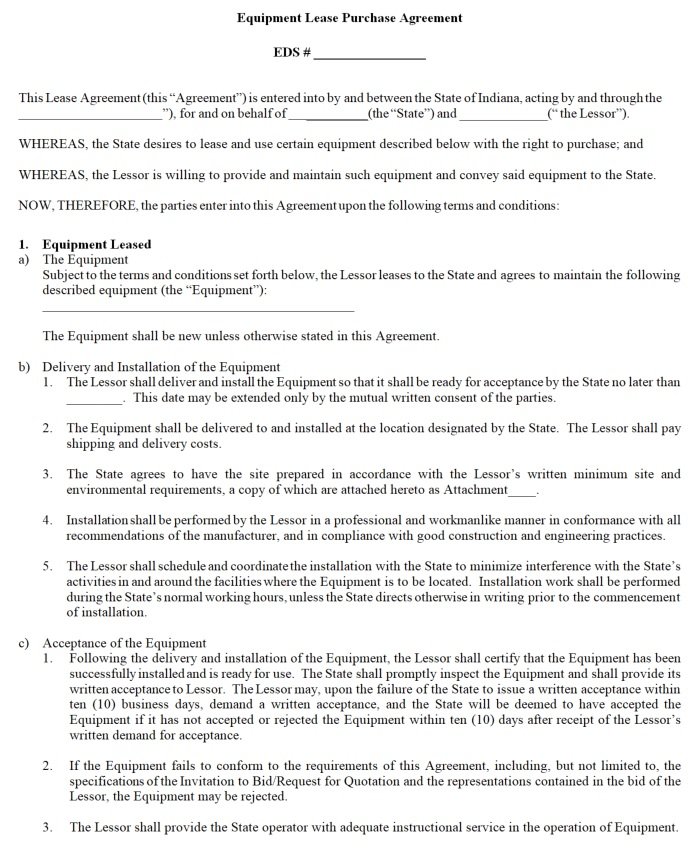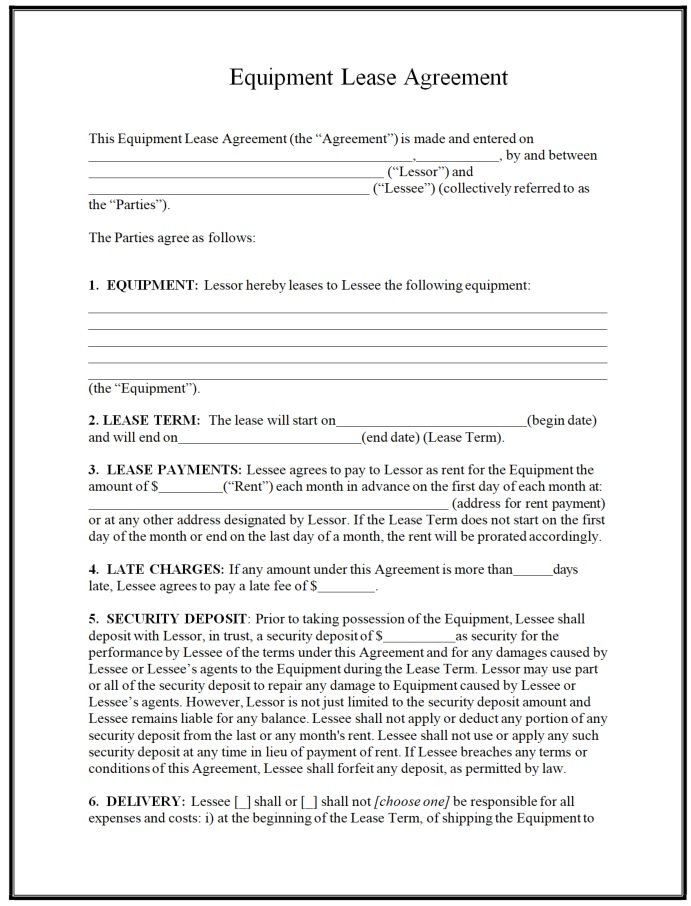You must have the right kind of equipment lease agreement template if you offer equipment leasing. This document should always be on hand each time you rent to someone. It protects your assets and your business by stating each party’s responsibilities.
Table of Contents
- 1 What is an equipment lease agreement?
- 2 How does an equipment lease work?
- 3 How to write an equipment lease agreement?
- 4 Some tips for writing an equipment lease:
- 5 FAQS (Frequently Asked Questions)
What is an equipment lease agreement?
An equipment lease agreement is a formal document that allows a person or a company that owns the equipment to describe the rules and limitations of their equipment lease process. Depending on the agreement and the needs of both parties, equipment leases can be short or long. This document is also known as an equipment rental contract and equipment rental agreement.
Moreover, this agreement protects the person who owns the equipment and the person renting the items from legal action. It specifies the responsibilities of each involved party.
How does an equipment lease work?
A person or a company seeks a leasing supply company in their industry when they want to use some equipment without purchasing it. They will offer an equipment lease agreement if they have equipment that the lessee needs. This agreement contains details about the terms of use for the gear, the lease length, and the financial information.
Typically, the lessee pays a specific amount in return for using the items. Depending on the equipment and industry, the particular schedule and amount of the lease payments will be decided. In addition, leases may have interest and the lessee will have to pay interest daily or weekly in case of late charges.
How to write an equipment lease agreement?
Consider the following steps to write an equipment lease agreement;
Contact details of both parties
The contract must contain the complete legal names of both parties. If you want the document to be legally binding, don’t use nicknames or incomplete business names. Also, include the address and contact details of each party. All the people who are involved in the agreement either three or more will need to be identified at the top of the document.
Type of the lease
You can have two options when describing the type of lease that are a fixed lease or a lease on an interval basis. In a fixed lease, the lease will come into effect on the start date and terminate on the end date. On the other hand, a lease on an interval basis means the lease will become effective on the start date and will continue until either of the parties provides advanced notice to terminate the agreement.
Equipment information
In this section, you have to clearly describe the equipment that is going to be leased. If there is more than one item then describe all the pieces of equipment. For the sake of clarity, specify the equipment’s make, model, year, and more in this part. Include all the correct items here to ensure that the agreement is correct and accurate.
State how payments will be made
Depending on the equipment you are leasing, the charges and deposits may vary. You should clearly describe the rental costs and schedule. It’s up to you either to make one-time payments or payments at intervals.
In a one-time payment, the entire amount is rendered and it is a nonrecurring payment transaction. While interval payments occur repeatedly and periodically. Moreover, the payments can be made in the;
- Cash
- Check
- Debit card
- Credit card
- Automatic draft
In order to keep everyone on the same page, make sure the nature of the payment and the schedule for the payments must be clear.
Late fees and penalties
Include details about fees and penalties that the lessee may charge or face as a result of missed payment, damaged equipment, or any illegal activity. Ensure that all these fees and penalties are associated with the right actions. Also, you may have to take specific actions to repair or replace the items that have been damaged.
Detail lease terms
You have to discuss the following terms in your agreement;
Delivery and returns
Provide the following information here;
- Who is responsible for delivery
- When the lessee can report discrepancies
- After the termination of the lease, when the lessee should return the equipment
Location of equipment
State clearly in this part of the document where the equipment will be located during the lease.
Maintenance and repairs
This section provides the following details;
- Who will be responsible for the maintenance of the equipment
- Whether or not the lessee is allowed to alternate the equipment
- At any point during the lease, whether the lessor can inspect the equipment
Insurance and tax
Include details about liability insurance and taxes and specify who is responsible for damaging insurance for the equipment. This type of insurance covers damage caused to someone else’s property and caused by anyone else using the property.
Warranty period
An equipment lease typically includes warranty provisions. If you choose yes then the contract will include a provision that states either no warranties or limited warranty.
The equipment in the case of no warranties is leased “as is” without any promises about its condition. In case of limited warranty, the equipment is only warranted by the lessor in good working condition.
Lease cancellation
Cancellation of the lease is possible for various reasons. State the ways in which the lease can be ended. The lessor must provide the number of days’ notice to the lessee before canceling the lease.
Subletting
If subletting is allowed then describe how the sublease agreement can work.
Signatures
The contract must be signed by the equipment owner and the person renting it. The signatures of involved parties make the document valid so you cannot afford to miss this step.
Some tips for writing an equipment lease:
Consider the following tips while writing an equipment lease;
- The leasing standards and concerns of every industry are different. Therefore, do research before writing or signing your first equipment lease to determine what other leasing companies related to your field include in their agreements.
- Equipment maintenance is important in order to keep it in good condition. An equipment lease must contain a clause that describes the maintenance expectations for the gear. Decide who is responsible for equipment maintenance and how often it should be performed.
- For the duration of the contract, the lessor should ask the lessee to have the leased equipment insured because the lease needs deposits to cover repairs. A good insurance policy will protect both parties from liability in case the equipment gets damaged.
- Your contract should include a renewal clause if you want to set up a lease that renews automatically. This clause states any differences between the initial and renewal contracts.
FAQS (Frequently Asked Questions)
Some examples of equipment leasing are;
1- Rental car
2- Moving truck companies
3- Mechanical devices
4- Computers
5- Construction equipment
The lessee is considered the owner of the equipment in a finance lease. They have full control of the residual value.

